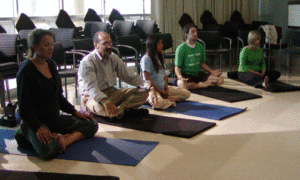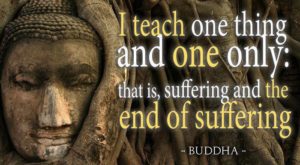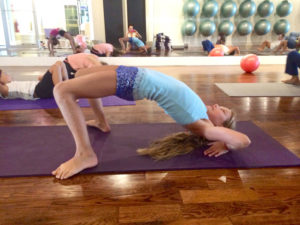By John M. de Castro, Ph.D.
“Studies show that the ways we intentionally shape our internal focus of attention in mindfulness practice induces a state of brain activation during the practice. With repetition, an intentionally created state can become an enduring trait of the individual as reflected in long-term changes in brain function and structure.” – Daniel Siegel
“Mindfulness is awareness that arises through paying attention, on purpose, in the present moment, non-judgementally. It’s about knowing what is on your mind.” (Jon Kabat-Zinn). It has been shown to be highly related to the health and well-being of the individual. Mindfulness training has also been found to be effective for a large array of medical and psychiatric conditions, either stand-alone or in combination with more traditional therapies. As a result, mindfulness training has been called the third wave of therapies. In fact, though, little is known about how training improves mindfulness.
It is amazing that so little is known about the development of mindfulness, given its effectiveness and increasing popularity. It is important to understand how it develops and what affects that development in order to optimize its use. In today’s Research News article “From a state to a trait: Trajectories of state mindfulness in meditation during intervention predict changes in trait mindfulness.” See:
or below or view the full text of the study at:
http://www.ncbi.nlm.nih.gov/pmc/articles/PMC4404745/
Kiken and colleagues study the development of mindfulness during 8-weeks of Mindfulness-Based Stress Reduction (MBSR) training. MBSR includes meditation, body scan, and yoga training. They measured the enduring tendency toward being mindful, called trait mindfulness, and also psychological distress before and after the 8-weeks of training. They also measured the individuals’ immediate states of mindfulness each week.
They found that mindfulness significantly increased in a linear fashion over the 8-weeks of training and simultaneously psychological distress decreased. In addition, trait mindfulness increased from the beginning to the end of training indicating that the training increased the enduring tendency to be mindful. This is important as it indicates that MBSR training doesn’t just produce momentary changes in mindfulness but produces lasting changes. Individual participants differed in how rapidly they increased mindfulness during training. Kiken and colleagues used a sophisticated statistical technique called Latent Growth Curve Analysis to investigate if these differences were responsible for differences in the change in trait mindfulness. They found that participants who increased in state mindfulness fastest over the 8-weeks ended up having the greatest increase in trait mindfulness and decrease in psychological distress.
These results are significant and interesting. They clearly show that Mindfulness-Based Stress Reduction (MBSR) training increases mindfulness weekly over the program and these increases are significantly related to increases in the enduring tendency to be mindful, trait mindfulness, and to decreases in psychological distress. In other words, the momentary changes in mindfulness are translated over time into more permanent changes in mindfulness and psychological health.
So, increase overall mindfulness and mental health with mindfulness practice.
“There is more than one way to practice mindfulness, but the goal of any mindfulness technique is to achieve a state of alert, focused relaxation by deliberately paying attention to thoughts and sensations without judgment. This allows the mind to refocus on the present moment. All mindfulness techniques are a form of meditation.” – Harvard Health Guide
CMCS – Center for Mindfulness and Contemplative Studies
This and other Contemplative Studies posts are also available on Google+ https://plus.google.com/106784388191201299496/posts
Study Summary
Kiken, L. G., Garland, E. L., Bluth, K., Palsson, O. S., & Gaylord, S. A. (2015). From a state to a trait: Trajectories of state mindfulness in meditation during intervention predict changes in trait mindfulness. Personality and Individual Differences, 81, 41–46. http://doi.org/10.1016/j.paid.2014.12.044
Abstract
Theory suggests that heightening state mindfulness in meditation practice over time increases trait mindfulness, which benefits psychological health. We prospectively examined individual trajectories of state mindfulness in meditation during a mindfulness-based intervention in relation to changes in trait mindfulness and psychological distress. Each week during the eight-week intervention, participants reported their state mindfulness in meditation after a brief mindfulness meditation. Participants also completed pre- and post-intervention measures of trait mindfulness and psychological symptoms. Tests of combined latent growth and path models suggested that individuals varied significantly in their rates of change in state mindfulness in meditation during the intervention, and that these individual trajectories predicted pre-post intervention changes in trait mindfulness and distress. These findings support that increasing state mindfulness over repeated meditation sessions may contribute to a more mindful and less distressed disposition. However, individuals’ trajectories of change may vary and warrant further investigation.
http://www.ncbi.nlm.nih.gov/pmc/articles/PMC4404745/









